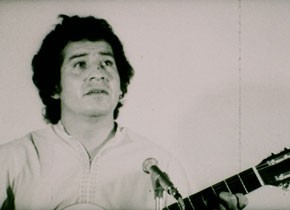Santiago Álvarez: Now
December 14 to 19, 2011
Santiago Álvarez (1919-98) was a maker of Pop Art – of Agit Pop Art, to be exact. His films are like posters, loud, exciting, thrilling and disturbing, but above all: clear. With him, the Cuban Revolution found a filmmaker who gave cinematic credibility to its political potential and eroticism – a communism that could be as delicate as Hanoi, martes 13 (1967) or as gripping and powerful as Now (1965, with the song by Lena Horne driving an attack on U.S. racism); as biting in irony as L.B.J. (1968) and as burning with hope as El tigre saltó y mató pero morirá ... morirá ...!! (1973, a tribute to folksinger and folk-hero Victor Jara, murdered by the Chilean junta in September 1973).
Álvarez’ filmmaking had few precursors, of which Dziga Vertov was certainly the most significant. Also, he was often compared with John Heartfield and his interventionist collage art. Unlike the protagonists of Direct Cinema, who in the sixties represented the dominant discourse on documentary film in the "first world", Álvarez did not believe in an "objective" cinema of seemingly impartial representations of social contexts. He was involved in building a new, hopefully better world, to define and to promote it – the reality of his films consists of his ideals, beliefs and desires. The best of these live fully within montage, they draw their strength from individually charged moments and from the clash of contradictions. Thus, a current is produced, rhythm, flow – it is no coincidence that music played such a central role in Álvarez' works, as stylistic element and as a subject in itself.
The central decades for Santiago Álvarez were the sixties and seventies. As the build-up of Cuba was complete and the first cracks appeared in the fabric of the state, his films grew more melancholy. Álvarez had set a new standard in documentary cinema but at the time of his death in 1998 he was nearly forgotten. It is up to a new generation in the 21st century to rediscover his thinking and filmmaking: for now.
The retrospective consists of 15 short and medium-length films and will be complemented by Travis Wilkerson's cinematic homage: "Accelerated Under-Development: In the Idiom of Santiago Álvarez” (2003). A joint project of the Film Museum and the Slovene Cinematheque in Ljubljana, with thanks to Jurij Meden.


